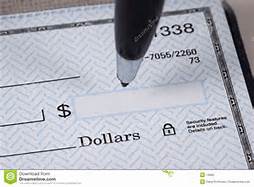Anyone in this business has undoubtedly been exposed to the newest darling term among the marketing consultant set: “Customer Experience” or “CX.” Perhaps you’ve even been to a seminar or read a book on the subject of crafting a cradle-to-grave strategy to delight your customers, from the time they’re prospects to after-sale support. And perhaps you’ve wondered what that might mean in real-world terms.
So check this out.
 Bought a new car recently. (The old clunker had clunked past 110,000 miles and it was time.) Perfectly pleasant buying experience, especially for a car dealership, which tends to settle in just below U.S. Congress on the public regard scale.
Bought a new car recently. (The old clunker had clunked past 110,000 miles and it was time.) Perfectly pleasant buying experience, especially for a car dealership, which tends to settle in just below U.S. Congress on the public regard scale.
Anyhoo, a couple weeks after the purchase, I receive a check in the mail from the dealer. It’s for $6.18, for “overage in motor vehicle fee.” Turns out my invoice included a line-item fee ($50? $60? something like that…) for DMV registration, and apparently the dealer over-estimated, and was reimbursing me the difference.
 Now, three things: One, I certainly don’t need the six bucks. Two, I’m willing to bet that it cost the dealer more than $6.18 to process, cut and mail
Now, three things: One, I certainly don’t need the six bucks. Two, I’m willing to bet that it cost the dealer more than $6.18 to process, cut and mail
that check. And three, it’s entirely possible that the whole DMV overage was just a ruse, an excuse to mail me a check and curry my favor. But all of those are beside the point. Because when I saw that the dealer, two weeks after sale, was sending me legal tender, unexpectedly and unnecessarily, I found myself delighted.
That check will stick with me. And, down the road, when my shiny new car is a 110,000-mile clunker, I’ll be paying that dealer a visit. And it cost them exactly $6.18 for me to feel that way.
Not a bad investment in CX, right?
